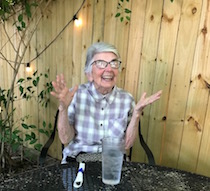Argh me hearties! Here it be me most favorite of all me favorite holidays — Talk Like A Pirate Day. Of course there’ll be the usual Hornpipe ceremony later today at 47 Field Crest Court and then me and me wench Claire will show up at the neighbor’s house for a grog. Then we’ll make our usual rounds of the neighborhood knocking on doors and yelling, “arr, scurvy dog me be needing to swill a pint or two of grog.” No grog and they get the blige rat insult, or offered the “ye scurvy dog!” response.
But to some of us, who always aspired to be pirates, this is a serious holiday. Piracy can be traced back to the second century, when the earliest recorded pirate attacks began after China’s Han Dynasty fell.
The period between 1650 and 1680 is known as the “Golden Age of Piracy.” The increased maritime trade and travel between Europe, the Americas, and Africa provided plenty of opportunities for Caribbean pirates.
In the 1800s, female pirate Ching Chih command a fleet of 1,800 ships and between 40,000 and 80,000 pirates.
And then in September of 2002, Talk Like A Pirate Day became National Talk Like A Pirate Day. Even though Talk Like A Pirate Day was born in 1995, when two friends created the day as a joke, it didn’t gain wide recognition until 2002 when they wrote to humor columnist Dave Barry asking him to be the spokesperson for a National Talk Like A Pirate Day. Barry agreed, wrote a column about the holiday and gave it national prominence, spurring celebrations across the country. The date of September 19 was chosen because it was one of the founders’ ex-wife’s birthday and the only date he was able to remember.
One of my neighbors said the closest he ever got to a pirate was the Pirates of the Caribbean Ride at Disneyland. Since this is Talk Like a Pirate Day, I thought a little bit about that ride might be in order…
Even though Walt Disney oversaw the design and construction of the ride, he died three months before the ride opened to the public.
The fire chief in Anaheim was so concerned with how real the fire effects inside the ride looked, he asked Disney to install an automatic shutoff, triggered if a real fire broke out.
Disney has never confirmed the rumors, but it’s possible that one of the decorative skulls inside the ride is part of a real human skeleton.
The Blue Bayou restaurant, located in the “swamp” at the start of the ride, offers a full menu of Creole cuisine.
The ride consists of a boat ride through a 1,838-foot world of Pirates of the Caribbean and takes almost 15 minutes, making it the longest ride at Disneyland.
Pirates continue to capture our imagination. When most people think of pirates, they picture piracy as described in Robert Louis Stevenson’s “Treasure Island.” The book was hugely influential in creating the pirate as a pop culture stereotype. Treasure Island mentioned X-marked maps, shoulder-perched parrots, and buried treasure — things that always come to mind when we think of pirates.
Unfortunately, most of the fun phrases we use to celebrate today and attribute to pirates are just fiction, but that doesn’t take away from the holiday.
And pirates do still exist today, but on a much smaller scale than in previous centuries and they still occasionally attack ships passing through international shipping channels. Unfortunately they don’t fly the Jolly roger, wear eye patches, or have parrots on their shoulders…. all the more reason to celebrate today like we do.
While discussing my enthusiasm for this year’s TLAP Day, someone asked do we really need an International Talk Like A Pirate Day. Well, make no mistake — we do. It’s a little hard to articulate why, but we do. I think it boils down to talking like a pirate is fun — it’s probably just that simple.
I’ve mentioned it before, but me olde name be Jimmy, but today I’ll be known as Bubonic Skyler Screed, and me wench’s olde name be Claire, but today she be Cap’n Lucy Redbeard.
Happy Talk Like A Pirate Day!
— 30 —


